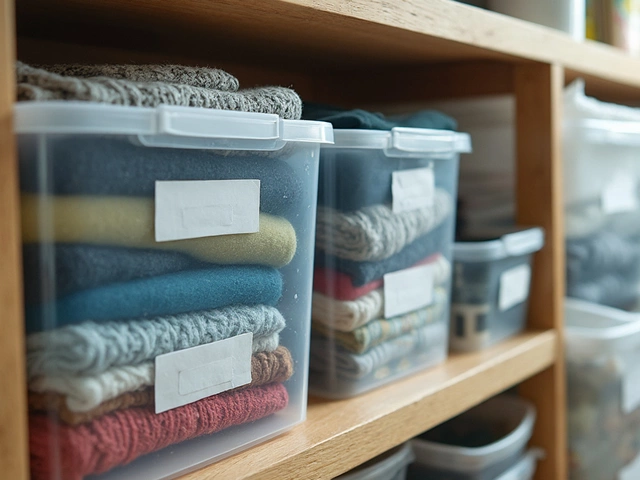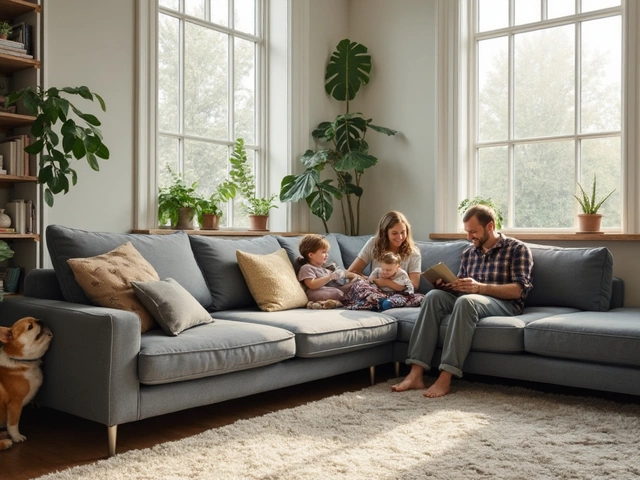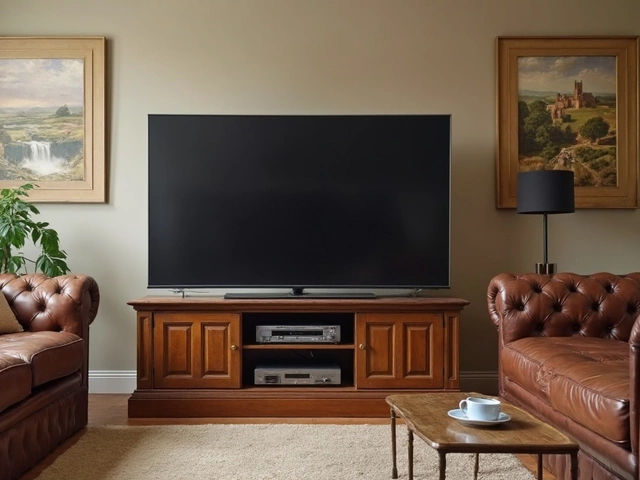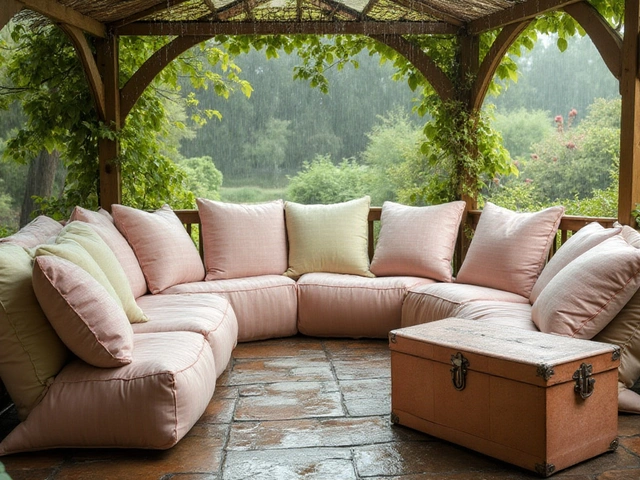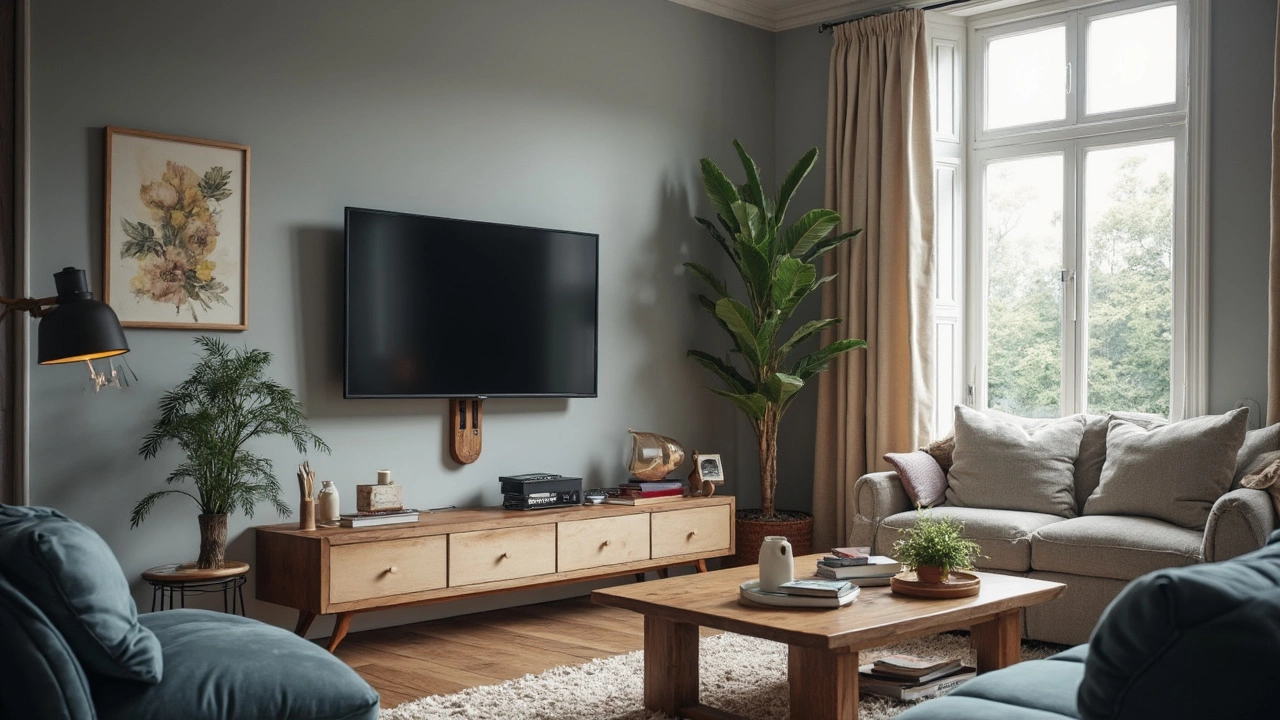 2
Apr,2025
2
Apr,2025
So, you've got this sleek flat screen TV, and it looks great perched on your stand, right? But here's the thing: without proper securing, it's just one accidental nudge away from disaster. No one wants a smashed screen or, worse, an injury because the TV took a tumble.
First up, why bother securing your TV? Besides the obvious heartache of a broken screen, there's also the safety aspect. Particularly if there are kids or pets around, you want that screen to stay put no matter what antics occur nearby. Basically, it’s about protecting both your TV and the people in your home.
- Understanding the Necessity of Securing Your TV
- Choosing the Right Stand for Stability
- Tools and Tricks for Securing Your TV
- Avoiding Common Mistakes
- Best Practices for TV Safety
Understanding the Necessity of Securing Your TV
Alright, let's get to the real deal—why securing your flat screen TV is a must-do task. It's not just about looking tidy; there's a bigger picture here. As TVs get slimmer and screens grow wider, the balance gets trickier. Even a small knock can put your precious TV at risk.
Here's a fact that's a bit of a wake-up call: according to the U.S. Consumer Product Safety Commission, an average of 11,000 kids suffer injuries related to TV tips each year. That’s a pretty compelling reason to make sure your TV isn’t wobbly on its stand. It's not just kids—pets can jump around and humans can be clumsy too.
Apart from safety, there's also the financial angle. Let's face it, your TV was probably a decent investment, yeah? A tumble can mean expensive repairs or even having to buy a new one. Keeping it securely fastened means peace of mind and dollar savings in the long run.
- Prevent Damage: Securing helps prevent screen damage due to sudden falls.
- Ensure Safety: Reduces risks of accidents in homes with kids and pets.
- Protect Investments: Saves costs on repairs or replacements.
So, going beyond aesthetics, securing your TV is about avoiding mishaps and keeping your home a safe zone. It's a simple step that pays off big time.
Choosing the Right Stand for Stability
Picking the right stand for your flat screen TV isn’t just about finding one that matches your decor. The right stand is a key player in keeping your TV safe from toppling over. Here’s the lowdown on what to keep in mind.
First off, size matters. Check the manufacturer’s guidelines on your TV for recommended stand sizes. A stand that's too small can be a risky business, as you want the TV base to sit comfortably without overhanging. For a 55-inch TV, for instance, look for a stand that supports at least that width.
Next, consider the weight capacity. Safe bet? Go for a stand that can hold at least 20% more than your TV’s weight. This extra buffer keeps things secure if you decide to add a soundbar or gaming console later on.
Material also plays a part. Solid wood stands aren’t just classic—they’re sturdy too. Metal or tempered glass can look slick, but check for good reviews to ensure they can handle some action without swaying.
Features like adjustable shelves or cable management holes might not seem crucial, but they can add stability and safety by keeping cables tidy and reducing clutter. A tangle of wires can turn into a tripping hazard faster than you think.
- Consider aesthetics: While stability is your main goal, the appearance also matters. Picks with universal styles fit a range of home designs.
- Spot check for anti-tip features: Some stands include anti-tip brackets or options to bolt them to the wall for added security.
- Test drive in store: If possible, give your prospective stand a wobble test to see how it holds up under pressure.
Remember, choosing the right stand is about a lot more than just looking good. With these tips in mind, you're on the way to ensuring your TV stays put, no matter what’s happening around it.
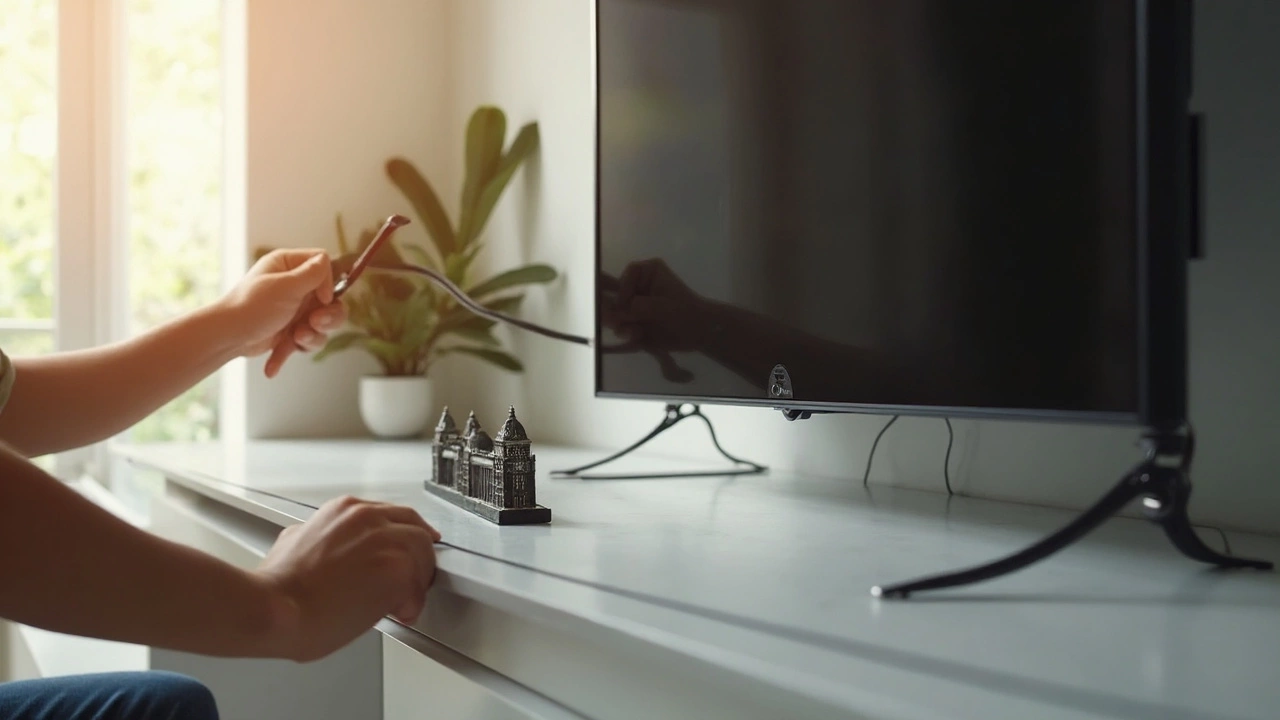
Tools and Tricks for Securing Your TV
When securing your flat screen TV on a stand, a few right tools and techniques can make all the difference between rock-steady and risky. Here’s how you can ensure your TV stays put.
Start by considering good old reliable safety straps. These are your best friend if you want added peace of mind. You can attach them from the back of your TV to the stand or even anchor them to the wall. Most kits come with detailed instructions, so just follow them step by step.
Another trick? Use anti-tip brackets. These little heroes do a great job of keeping your TV from tipping over. They’re pretty easy to install, and once they’re in place, they offer serious stability. And if you're wondering about style, many are designed to be hidden, so they don’t mess with your room’s look.
- Mounting brackets: Even if your TV stand isn’t wall-centered, mounting brackets can offer more anchoring security.
- Non-slip pads: Placing these under your TV stand helps prevent sudden shifts if someone bumps the stand.
- Velcro strips: Sometimes, adding Velcro can add enough tension to stop unplanned slides, though it’s more for smaller adjustments.
While tools help, don't overlook positioning. Make sure the stand's surface is completely level. Tilt can lead to unnecessary weight stress on specific points.
Now, let’s get a bit techy. Did you know that flat screens typically weigh between 15 to 100 pounds depending on the size? That weight needs the proper balance, especially if you're using a swivel stand. Those provide flexibility for viewing but pull out the measuring tape to ensure you're keeping things centered.
Avoiding Common Mistakes
When it comes to keeping your flat screen TV safe on a stand, it’s easy to slip up with some pretty common blunders. Let's tackle these head-on so you can avoid them like the plague.
One serious mistake is opting for a stand that's too small or too flimsy for your TV's size and weight. You need a stand that's not only designed to fit the TV but also robust enough to handle some accidental bumps or nudges. Always check the weight recommendations included in your stand’s manual.
Another error is neglecting the use of safety anchors or straps. These are not just optional extras—they’re vital for securing your TV. Often, people rely solely on the stability of a TV stand, but even the sturdiest stand can tip over if it’s bumped, especially in a rush or during a playful moment with pets and kids.
People often underestimate the weight distribution of a TV. Mounting your TV centrally on the stand not only makes it look better but also helps distribute the weight evenly. This might seem basic, but a lot of people either skip this step or misjudge where the TV's center should be.
- Check Weight Limits: Always ensure the TV stand can handle the weight of the TV.
- Use Safety Straps: Secure the back of your TV to the stand or the wall using safety straps.
- Centralize the TV: Place the TV centered on the stand for even weight distribution.
Finally, don’t put the stand on unstable flooring or uneven surfaces. Doing so can increase the risk of tipping. Make sure the surface where your stand sits is level. If your floors aren't perfectly flat, consider using a rug or leveling pads to counteract any wobble. A little extra attention here can save you from a big headache later.
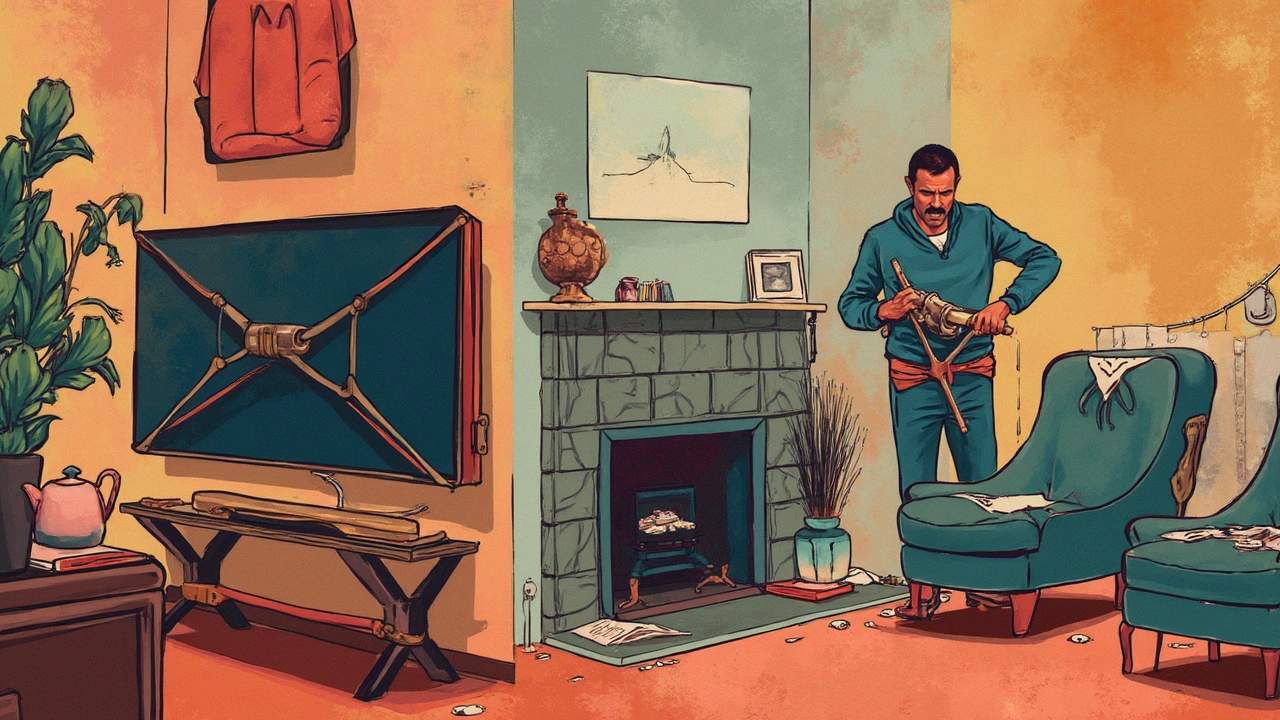
Best Practices for TV Safety
Securing your flat screen TV isn't just about peace of mind; it's about creating a hazard-free zone in your living space. Here’s how to make sure your TV stays safely put.
Start by checking if your TV stand is the right size for your TV. Too many times, people opt for stands that are either too small or too flimsy. The stand should be wide enough to support the base and stable enough to withstand accidental bumps.
“A well-secured TV is about reducing risk. Use the right tools and techniques to protect both your valuable electronics and those around them,” says James Oliver, a home tech expert.
Let’s talk about some practical steps you can take:
- TV Safety Straps: These are your first line of defense and are super easy to install. Strap one end to your TV and the other to the back of the stand or the wall to secure it.
- Anti-tip TV Brackets: These work like magic to prevent tipping. It anchors the TV directly to the wall. If you have kids that love running around, this is a great option.
- Positioning: Place the TV far back on the stand, not close to the edge. This minimizes the chance of it getting knocked over.
- Use Non-slip Pads: Put these under the TV stand's legs to prevent the whole setup from sliding across smooth floors.
Did you know? According to the U.S. Consumer Product Safety Commission, thousands of injuries every year are due to TV tip-overs. That’s a pretty compelling reason to secure your TV safely!
Implementing these best practices doesn’t take a ton of effort, but it creates a safer home environment and keeps your precious TV intact. So, get those tools out and make your home a bit safer!
